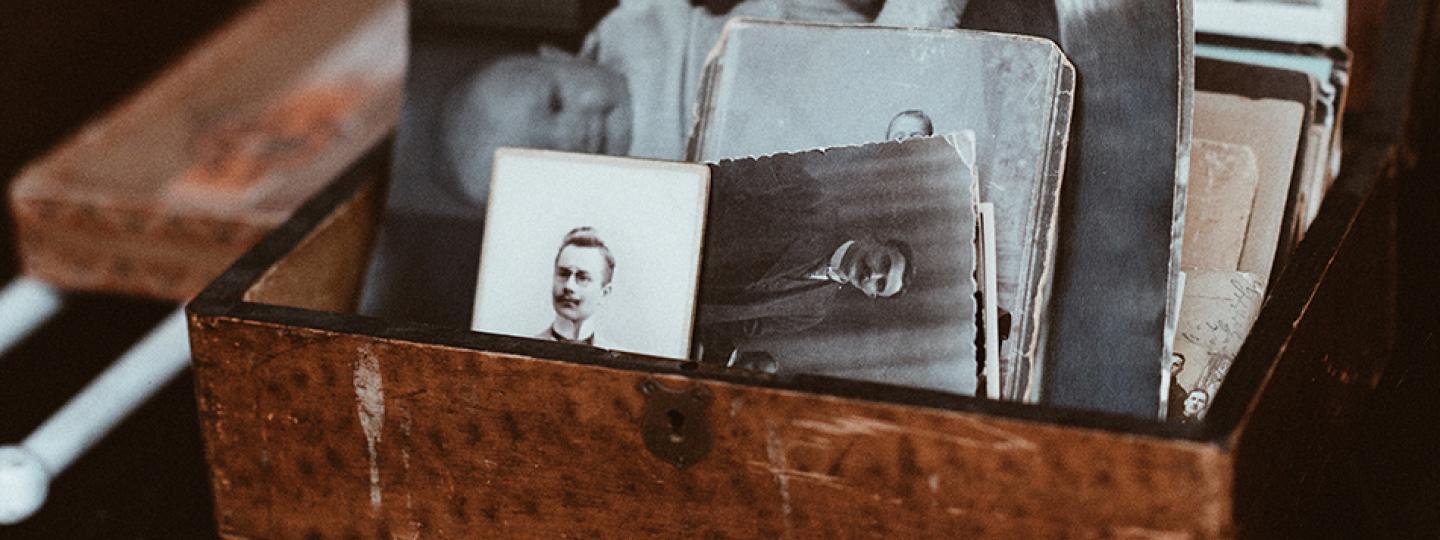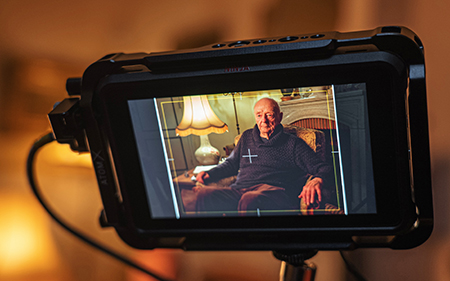Your family's history is worth capturing

Stumbling across history was the last thing Ross Kelsey expected while tidying his supervisor's office.
Kelsey, who is now San Jacinto College's director of evening/weekend college and campus services, discovered a "gold mine" of documents and DVDs. In 2011, students, faculty, and staff had begun interviewing local veterans and recording their oral histories as a service learning project.
Kelsey took the next step. Teaming with history professor Luis Reyes and new students, he resurrected San Jac's Veterans Oral History Project. Besides cataloging the stories for campus libraries, he researched missing details, created timelines, and submitted the recordings to the U.S. Library of Congress veteran archives.
The College has preserved the history of 36 veterans, with 21 stories currently archived in the Library of Congress.
While you may not have veterans in your family, you can preserve your family's stories for future generations. Kelsey and Reyes share these tips to interview your own family members.
1. Define your purpose.
Any successful project starts with a goal. Recording your family history could start with a passion to uncover untold stories and perspectives.
Now in their 70s, Reyes' parents have not shared much about their past — perhaps from cultural hesitation.
"It's almost like I have a void where I don't know who I am," Reyes said.
A good place to start is showing curiosity and empathy. Focus on the lessons your family members have learned rather than the mistakes they've made.
"They might be embarrassed by certain things, but tell them to share [only] what they want to share," Reyes said. "We're trying to find solutions to today's problems. Maybe what you have to say can help a future generation."
Also, share your plans for the interview. Will you create a DVD or digital recording you'll give to other family members? Will you post the interview on social media? Make sure your interviewees understand and agree to your plans.
2. Prepare your interviewee.
Once you've found willing volunteers, decide whether you'll interview in person or use a virtual platform like Zoom. What are your family members more comfortable with?
Also, share your questions in advance. Create a standard list you can tweak to fit different family members.
"Have a simple plan," Reyes said. "Have open-ended questions and simple yes, no, closed-ended questions."
Discuss the questions with them. Are any questions off-limits? Do they want to focus on anything in particular?
3. Record.
Nervous about interviewing? Whether you pull out a digital audio recorder, use a smartphone video app, or get written responses, the most important thing is to have a record.
"When you have any record, it's better than no record — something that can help us understand the time period or person," Reyes said.
Most people may prefer sitting for 30 minutes to an hour to answer questions aloud rather than spending hours writing their thoughts. An oral interview also captures the person's tone and personality.
Before recording, start with a casual conversation to get things rolling. Then ask whether your family member is ready to record. Ask questions only to keep conversation flowing (e.g., "Can you tell me more about that?"). Let everything happen organically.
"Remember, you are a witness to their story, and they will tell it," Kelsey said.
The Library of Congress offers these interviewing tips:
- State person's full name, date/location of interview, his/her relationship to you, and everyone present for the interview.
- Summarize the interview's purpose.
- Ask for basic biographical details (e.g., birthday, education, career, marriage, and children).
- If a veteran, ask about service branch, highest rank, and war/conflict served.
- Ask for personal reflections on important moments in life.
For more ideas, visit www.loc.gov/vets/conducttheinterview.html.
4. Save your work.
You've interviewed. Now what?
First, if you recorded the interview, preserve the digital files. Make copies and store in several places — on a local drive on your PC, a thumb drive, an external hard drive, or a cloud service. "Backups of backups" is always a good plan.
Store devices in a cool, dry place like a fireproof safe. Occasionally transfer the files to newer devices since technology changes and older devices can become inaccessible.
Second, Kelsey encourages transcribing the audio video files. You can find cheap transcription services online, or you can type the interview yourself.
"It can be easier from a time standpoint to read a transcription more than watching a video," Kelsey said. "But there are also times when reading the story will cause people to then want to watch."
5. Capture the past but treasure today.
Many of us can remember stories our parents or grandparents told us — oral history.
"An event can be retold numerous times by numerous people, but the impact of hearing firsthand what happened is immeasurable," Kelsey said.
Time is of the essence. As older generations pass away, we lose their voices and lose part of ourselves.
COVID-19 has disrupted many lives. As you capture the past, remember to treasure present relationships too.
"Recording history is great," Reyes said. "It's important to remember the past and make that connection with the past. But it's nice to live in the present. Life is short. It's important to treasure those people while they're still here."
Learn more about the Veterans History Project at www.loc.gov/vets.
Tech Tips
If you're interviewing in person, consider these video tips:
- Film horizontally. Picture a YouTube video.
- Check the background. Film in a quiet room with natural light.
- Test sound. Have your interviewee say a few sentences. Play back the recording. Can you hear him or her? Are any background noises interfering?
- Move closer to your subject. Footage may look grainy if you're sitting too far away.
- Stabilize your device. Use a tripod or prop your phone/device to avoid camera shake.
Photos courtesy of Unsplash: Banner photo by Roman Kraft / Feature photo by Hugo PDV

